Whether you want to start your mushroom-hunting journey or simply have an invested interest in fungi, there are several different types of poisonous mushrooms you should be aware of. Mushrooms are often misidentified when foraged, which is why knowing your fungi is key for your safety. So many mushroom species look alike, making it difficult to tell the poisonous ones from the edible ones!
Here’s a list of some of the most common types of poisonous mushrooms for you to be aware of before you go mushroom hunting.
What Happens if I Ingest Certain Types of Poisonous Mushrooms?
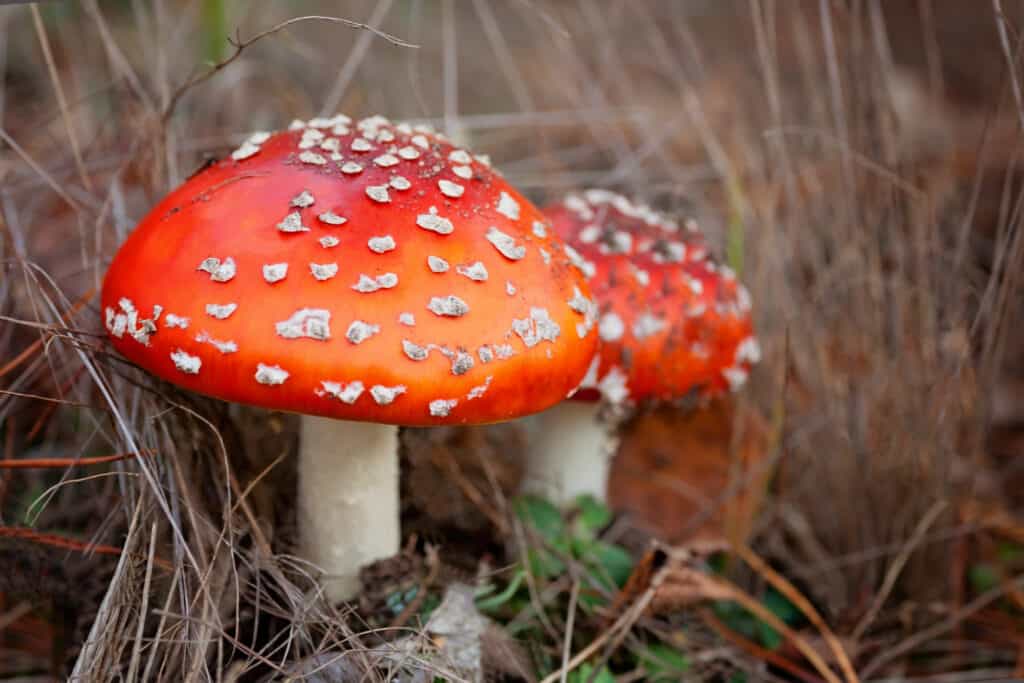
Depending on the mushroom you ingest and the amount ingested, your symptoms of mushroom poisoning can vary wildly. Some mushrooms will cause symptoms immediately. An even smaller amount of toxic species doesn’t produce symptoms in the human body for hours, if not days. By the time symptoms occur, it is often too late, as the liver has already processed the toxins.
Some symptoms of poisonous mushroom ingestion include:
- Nausea
- Vomiting
- Headache
- Fatigue
- Chills
- Hallucinations
- Loss of motor skills
- Organ failure
If you choose to forage for mushrooms in the wild, it is always best to only do so with the guidance of a fungi expert. There are hundreds of new fungi species discovered each and every year, with many sharing similar features. There are also no hard and fast rules for identifying types of poisonous mushrooms versus nonpoisonous mushrooms. It’s always better to be safe than sorry, so never consume a mushroom that you can’t 100% identify as edible!
Types of Poisonous Mushrooms
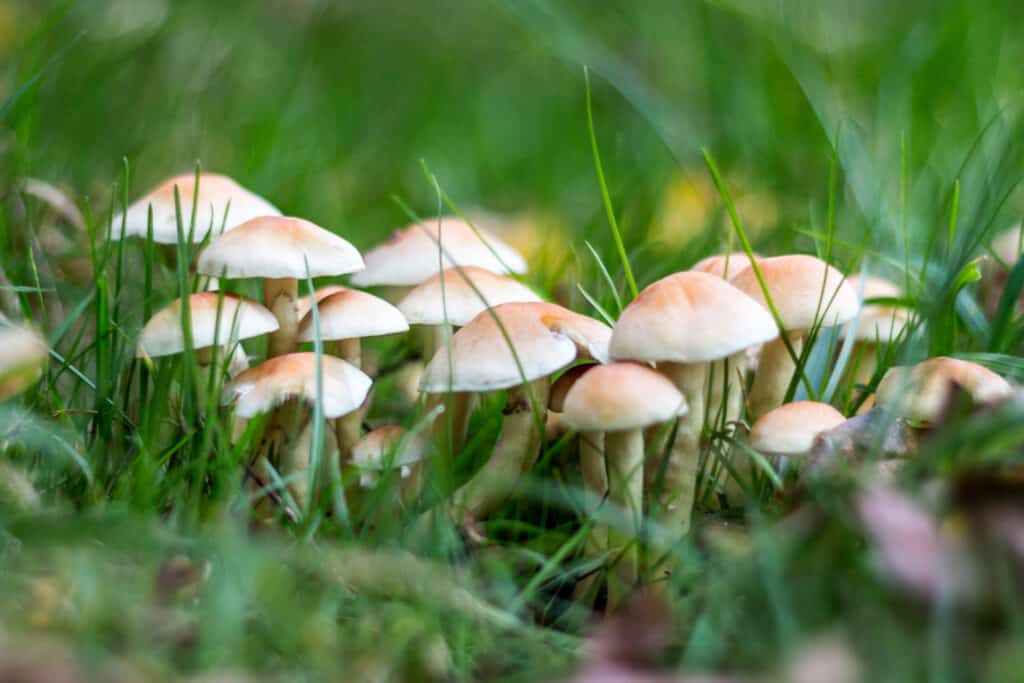
Knowing where poisonous mushrooms typically grow is a good place to start when you begin your wild mushroom hunting journey. With all of this in mind, let’s go over some of the most deadly types of poisonous mushrooms that you should avoid!
Death Cap (Amanita phalloides + Others)
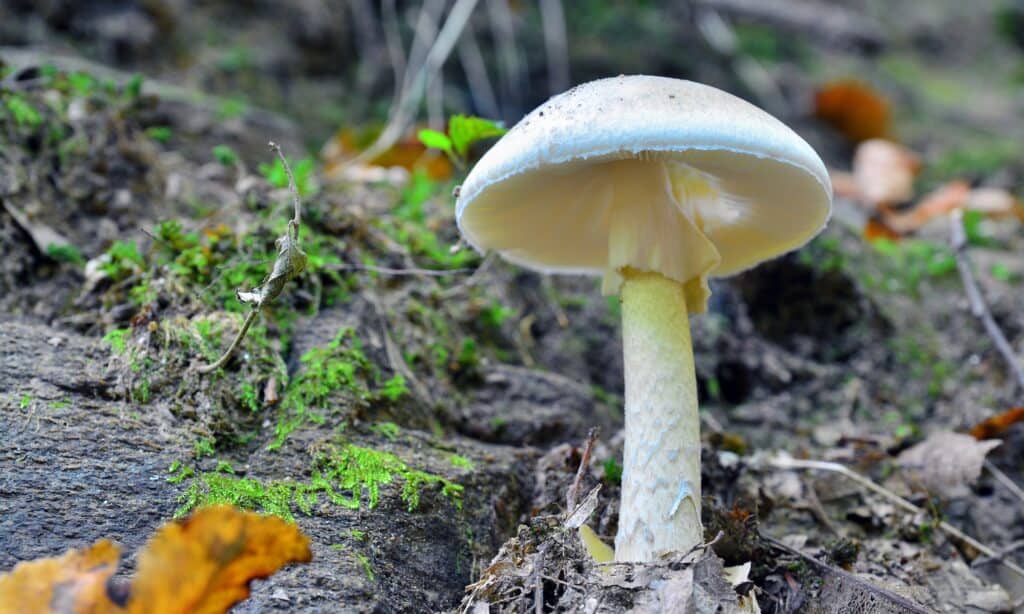
If there’s one mushroom you should be sure to avoid, it has to be the death cap mushroom. Studies suggest that half of a single mushroom is enough to kill a fully-grown adult. Many historical assassinations suggest that the death cap mushroom may have been utilized, including the potential death of Charles VI.
The Amanita genus contains multiple poisonous species, as well as edible ones. The death cap mushroom can be found around the world in a variety of settings but prefers the company of broadleaf tree species. It is fairly easy to identify, though it appears differently depending on its region. Most death caps have a greenish hue to their white caps, but this is not an entirely reliable identifier.
The death cap that grows in Latin America is known as Amanita arocheae, while the East Asian death cap is known as Amanita subjunquillea. Amanita phalloides refers to the death cap that is commonly found throughout Europe and North America. Symptoms of death cap poisoning often don’t appear for several hours, but if left untreated, the end result is typically liver failure.
Destroying Angel (Amanita ocreata + Others)
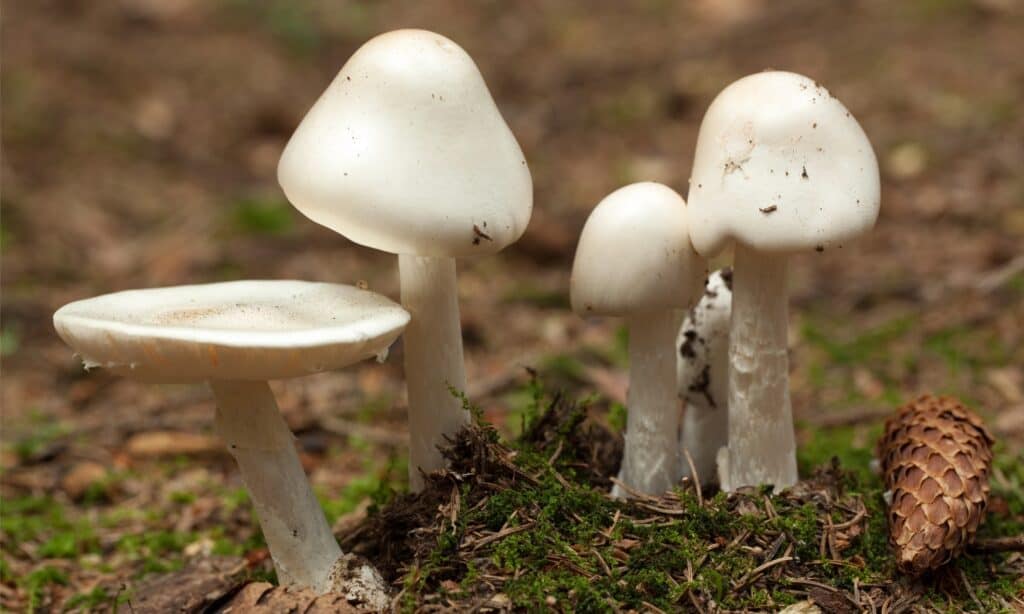
Similar to the death cap, there are a few different mushrooms known as the destroying angels. For example, Amanita bisporigera grows in the Eastern United States, Amanita exitialis grows in China and India, Amanita magnivelaris grows in North and South America, Amanita virosa grows in Europe, and Amanita ocreata grows in North America, particularly the Pacific Northwest.
Like the death cap (they are closely related!), destroying angel mushrooms look strikingly similar to many edible species. However, nearly all destroying angels are pure white in coloration, which may help with identification. Consumption of these mushrooms leads to liver and kidney failure a few hours to a few days after eating.
Lepidella
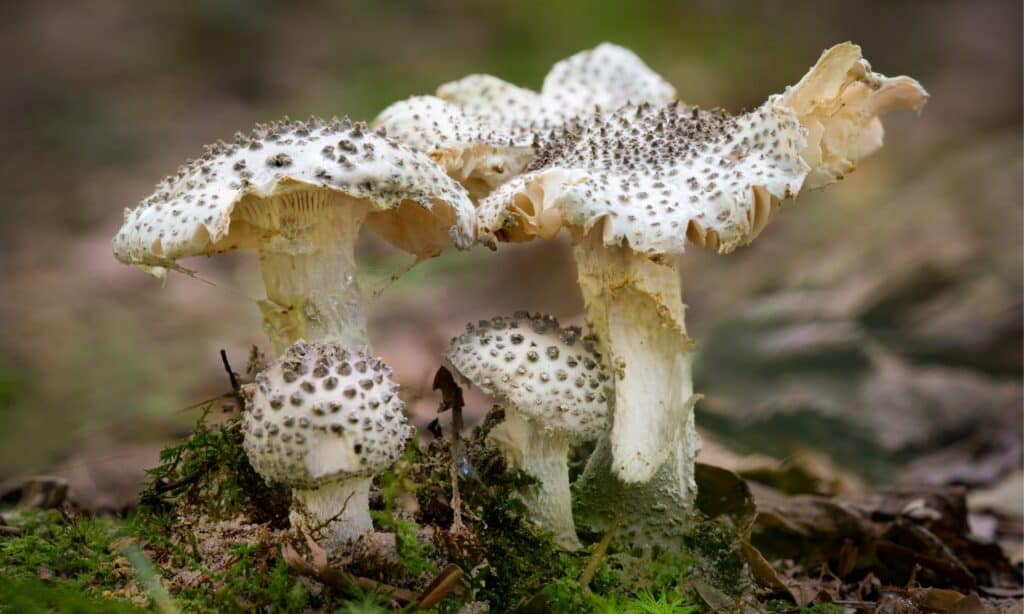
While not nearly as deadly as the destroying angels or death caps, some Lepidellas can still cause kidney or liver failure. Plus, they look just like a variety of edible mushrooms, particularly the highly-prized matsutake mushroom found in the Pacific Northwest. Other common Lepidella species reside in eastern Asia and Japan, and there are less-common species all over the world.
Fool’s Mushroom (Amanita verna)
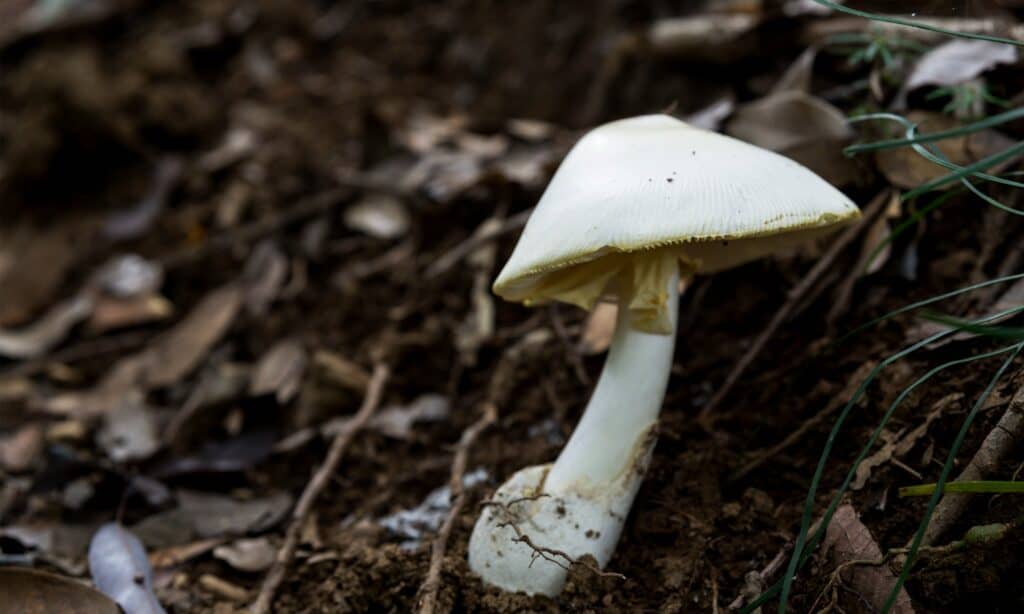
Also related to death caps and destroying angels, fool’s mushrooms are all white. They have delicate gills and a striking appearance, but they are just as poisonous as their relatives. While the fool’s mushroom only grows in Europe, it occurs in numerous types of woodland settings. You may be able to identify these types of poisonous mushrooms better because they fruit in spring as opposed to fall, a time of year when fruiting is common for many other mushroom species.
False Champignon (Clitocybe rivulosa)
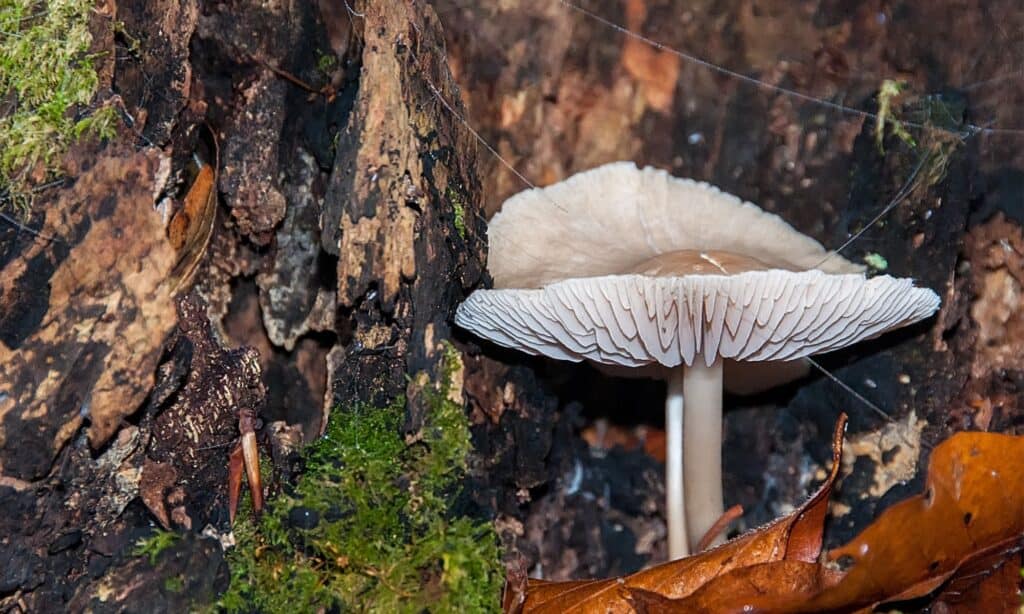
While the false champignon is rarely deadly, the frequent occurrence of this mushroom is what makes it so dangerous. Found in grassy fields and lawns along the West Coast of North America, these tan or grayish mushrooms cause gastrointestinal issues when consumed. More notably, this mushroom is also known as the sweating mushroom for its ability to cause human tears, sweat, and salivation. It can cause death if the poisoned individual has respiratory complications or preexisting conditions that may be exacerbated by large doses of muscarine.
Webcaps (Cortinarius rubellus + Others)
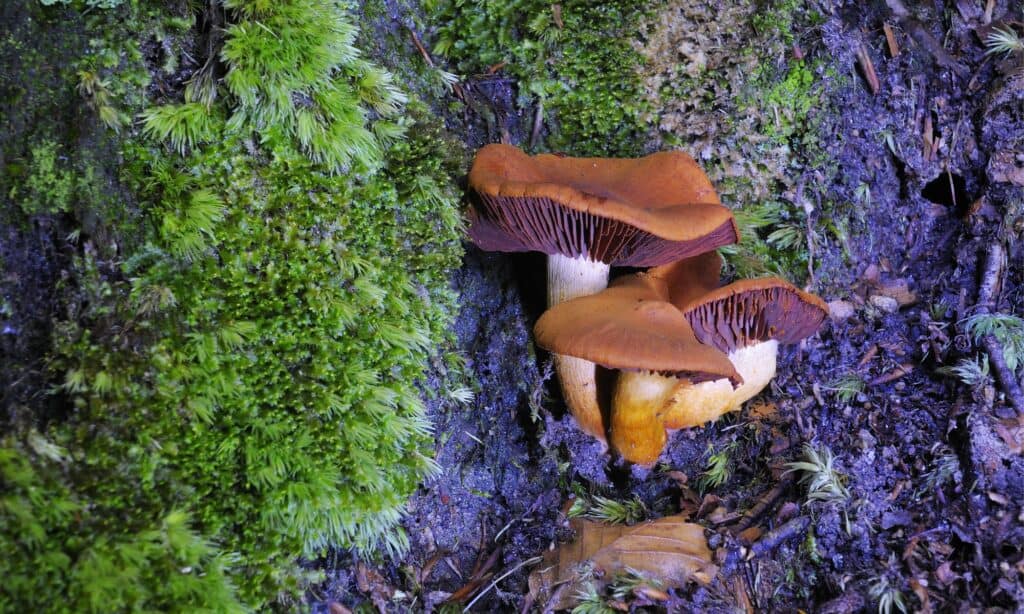
There are over 2000 different webcap species in the genus Cortinarius alone. The fool’s webcap, deadly webcap, and splendid webcap are all toxic representatives of this type of mushroom, and you can find poisonous webcaps all around the world. Targeting the kidneys, orellanine containing mushrooms can cause either death or complete renal failure if left untreated.
False Morels (Gyromitra esculenta)
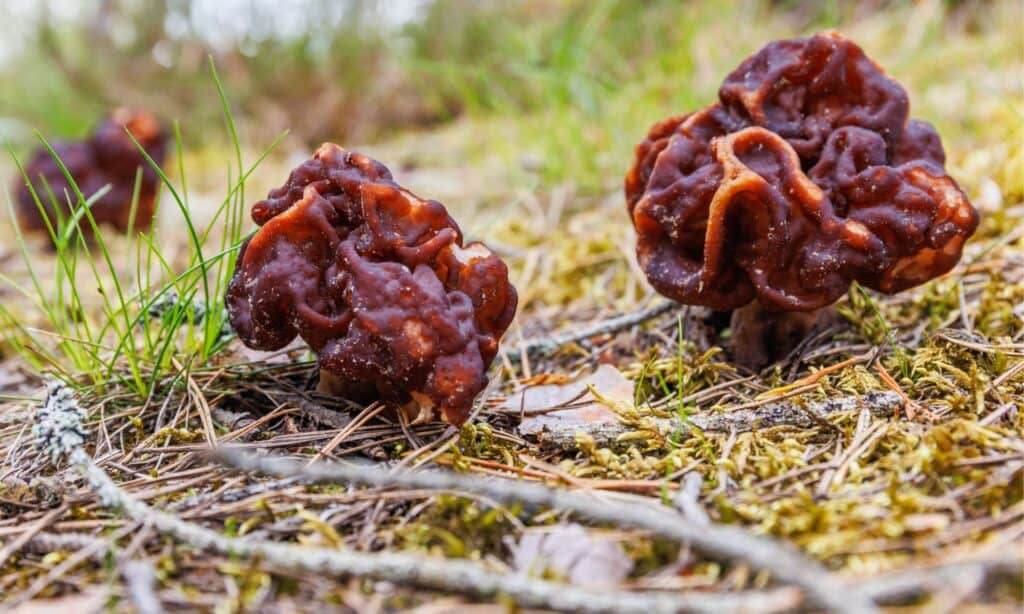
While some of the false morels in the Gyromitra genus are toxic, some other species are reportedly edible. This is typically only possible after cooking these types of mushrooms. However, even this process isn’t 100% safe, as many individuals have suffered from neurological symptoms after eating cooked specimens, including coma and death, but this may be attributed to misidentification of species.
Jack-o’Lantern (Omphalotus illudens + Others)
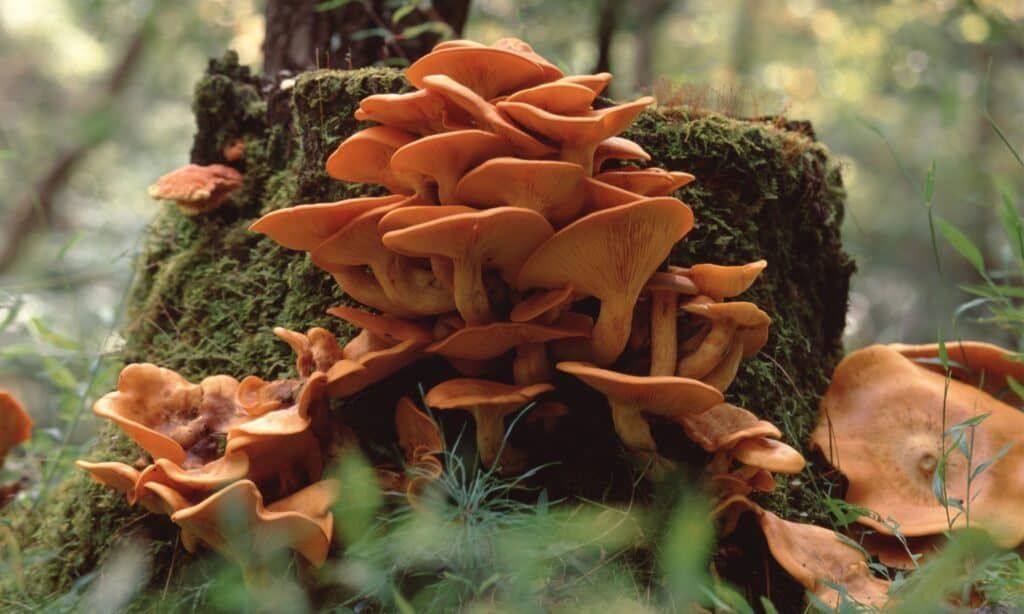
Another mushroom that isn’t quite deadly, the jack-o’lantern mushroom, is commonly found in Europe, North America and Japan. It is frequently mistaken for chanterelles, a prized type of culinary mushroom. Jack-o’lantern mushrooms cause gastrointestinal issues whether they are eaten raw or cooked, often severe but rarely if ever deadly. Their orange shade earns them their name as well as their reputation as a chanterelle look-a-like!
False Parasol (Chlorophyllum molybdites)

While it has yet to result in any fatalities, Chlorophyllum molybdites is one of the most consumed toxic mushrooms in North America. Also known as the green-spored parasol, the false parasol, and the aptly-named vomiter, Chlorophyllum molybdites can cause gastrointestinal problems. Given its proximity to populated locations and its appearance, this mushroom is frequently misidentified and eaten. In the United States in particular, it is pervasive and easy to confuse with other edible species!
Editor’s Note: While A-Z Animals does its best to ensure the accuracy of its content and photography, do not eat wild mushrooms without firsthand knowledge from a local mycologist or mushroom expert as many types of mushrooms look similar.




Leave a Reply